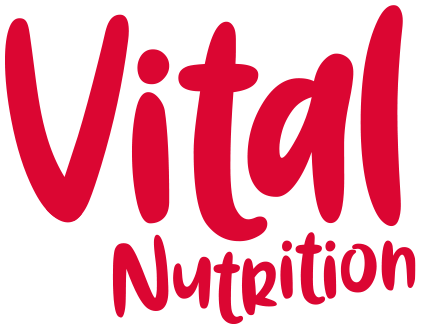Count colour and plant foods, not calories
It may surprise you to know that I am not a fan of calorie counting, whether for weight loss, or for health. Of course, it is important not to go crazy with calories and consume more than we need, but that is not getting to the root of good health or good nutrition.
When we eat in a way that nourishes our bodies and we choose foods that are packed full of nutrients, there is little need for calorie counting, as we are eating in a way that helps to regulate our appetite and stop us over-consuming the foods that make us fat.
When we simply look at food in terms of its calories, we are missing the point of good nutrition. We are making things too simplistic.
Calories come from fat, protein and carbohydrate. Most foods are a combination of the three macronutrients. Calorie counting tends to limit our intake of higher fat foods because fat is more calorie dense than protein or carbohydrate, but when you think about the functions of these important nutrients, it becomes apparent that cutting calories and fat is counterproductive if you are trying to lose weight. Here are some of the reasons why:
Fat helps us to feel full for longer, so it is important for appetite regulation and to help prevent over-eating
Fat is essential for metabolism and healthy thyroid function
Fat provides important fat-soluble nutrient including the vitamin A, D, E and K, so limiting our fat intake also limits our intake of these nutrients
Fat is essential. We need a daily intake of the essential fats, omega 3 and omega 6 for good health
Low fat foods are often ultra processed, packed with ingredients like sweeteners, emulsifiers and gums, with dubious health credentials
If you are serious about eating in away that helps you to feel better, look better and stay at a healthy weight, then make the nutrition on your plate count. Pack your diet full of good quality, unprocessed, natural foods that promote health and are as close to their natural forms as possible.
It can be tricky knowing which foods contain which nutrients, so instead of focusing on individual foods it is easier to focus on variety and colours. The broader the variety and colours, the greater likelihood of your diet being full of important nutrients such as fibre, vitamins, minerals and active components called phytonutrients. Together these contribute to the smooth running of your body and everyday metabolic processes.
The magic numbers
Let’s not get bogged down in calories and grams of protein or fibre, that can be difficult to translate the food on your plate. Here are some numbers that I think you may find more useful and easier to work out, without having to use and app or keep an in-depth food diary:
Eat a rainbow of at least 5 portions of fruit and vegetables a day
Every colour represents different vitamins and minerals, which is why eating foods from every colour of the rainbow can help guarantee you get a good intake of all nutrients.
Work out how many portions of fruit and vegetables you eat in a day (remember that one portion is about the size of your fist) and work your way up from there.
Studies show that 7 a day may be a better goal for good health, but start where you are and aim to gradually build your daily intake up.
2 portions of fruit a day
Eating more vegetables than fruit will mean that you are maximising your intake of minerals, vitamin and antioxidants. Try snacking on vegetables like carrot sticks, celery or peppers rather than overloading on fruit too much.
30 different plant foods a week
Studies how that the more plant foods we eat, the better the diversity of bacteria in our gut microbiome. This includes fruit, vegetables, herbs, spices, beans, lentils, nuts, seeds and wholegrains. Even green tea will count. Keep a food diary for a week and see how many different plant foods you can squeeze into your diet.

